Abstract
Isometric contraction of the abductor digiti minimi muscle (ADM) has been studied in six normal subjects. Twitch contraction times of ADM ranged from 60 to 68 ms and twitch torque ranged from 2·33 to 6·24 × 10-3 Nm. In three subjects torque declined by an average of 31% after tetanization at 50 Hz for 30 seconds but there was no similar diminution in the evoked muscle action potential suggesting that the fatigue arose from intrinsic muscular mechanisms. A marked decline in tetanic torque occurred with continued tetanization in two subjects for a total of five minutes, but this change was accompanied by a decrease in the muscle action potential. In six subjects threshold stimulation to the ulnar nerve at the wrist and to various sites over the motor point of ADM allowed 55 threshold twitch contractions to be identified after averaging. A unimodal range of contraction times ranging from 40-100 ms was found and this was confirmed by additional experiments in two subjects in whom 30 threshold twitch contractions were identified using a needle electrode to stimulate various sites in the motor point. Tetanization at 50 Hz was performed using threshold stimulus levels. Nine threshold tetanic contractions were evoked in two subjects. In eight tetanic torque progressively fatigued to between 14 and 20% within 60-90 seconds, but, in one tetanic contraction, torque proved relatively fatigue resistant. These results suggest that there is a homogeneous group of motor units in ADM (with respect to contraction time) and that this group contains what are probable fast twitch fatigue sensitive and fatigue resistant motor units. No evidence of a distinct group of slow twitch units was found.
Full text
PDF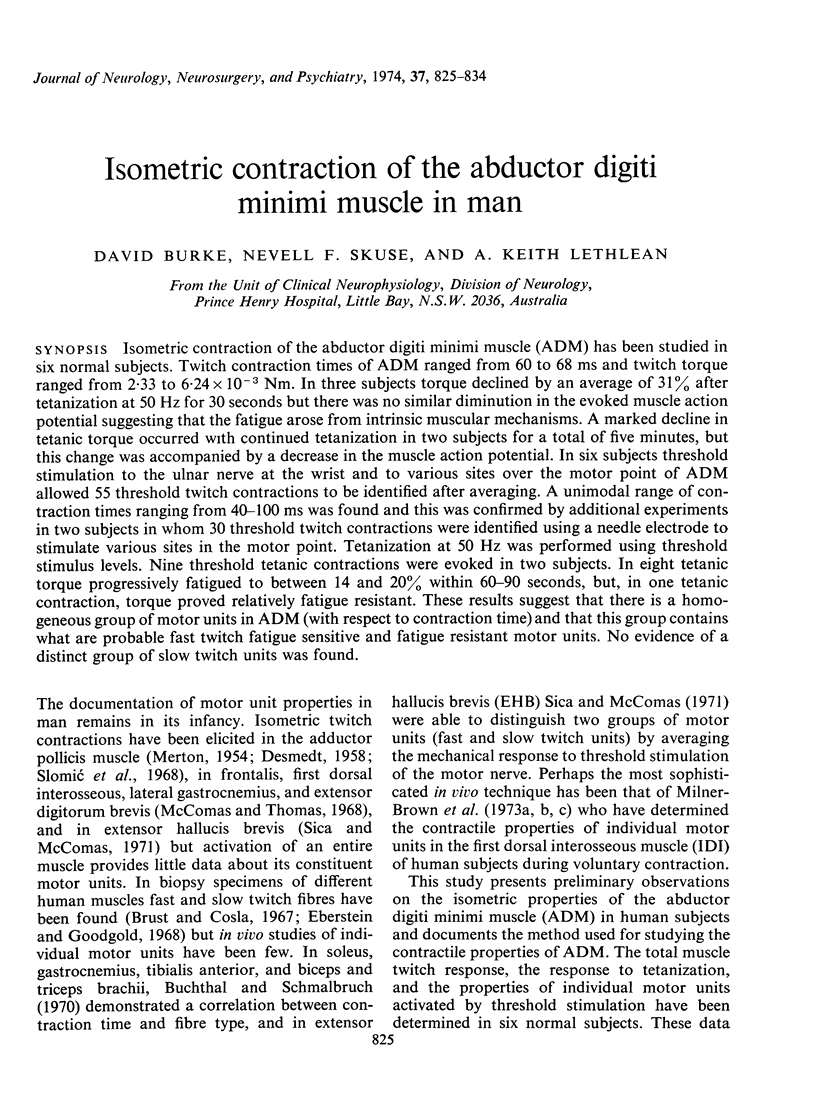
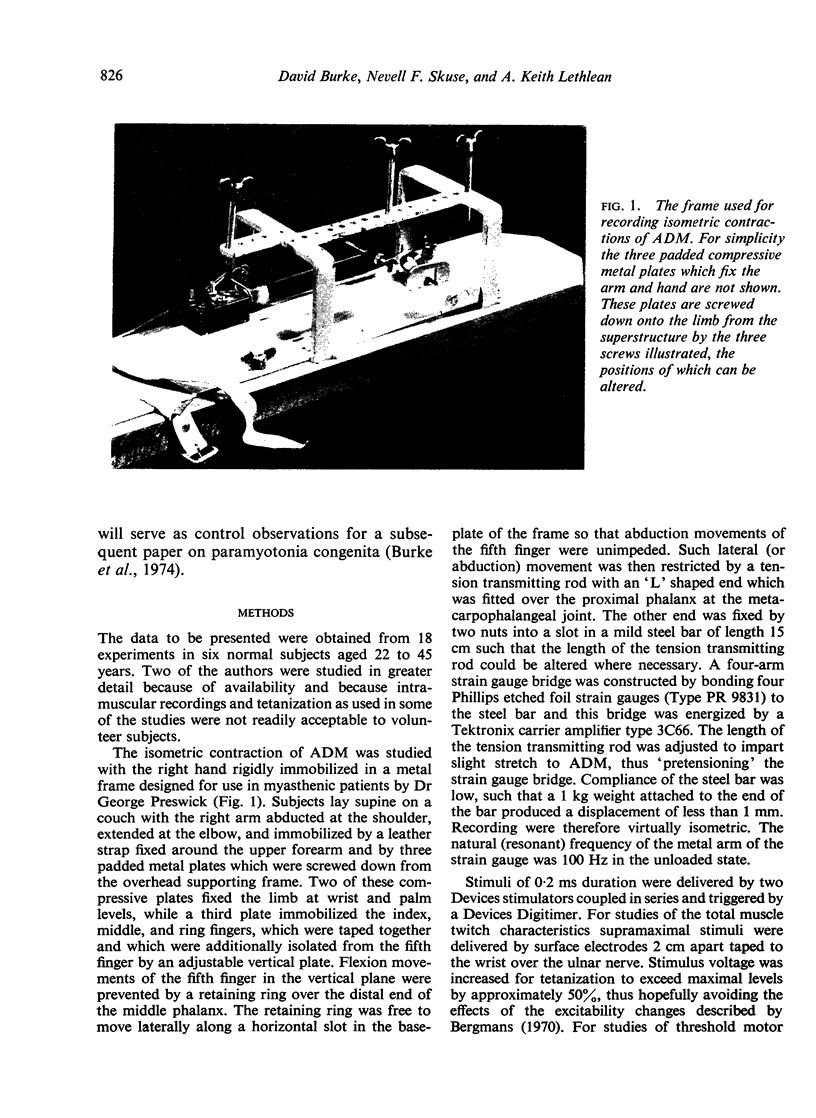
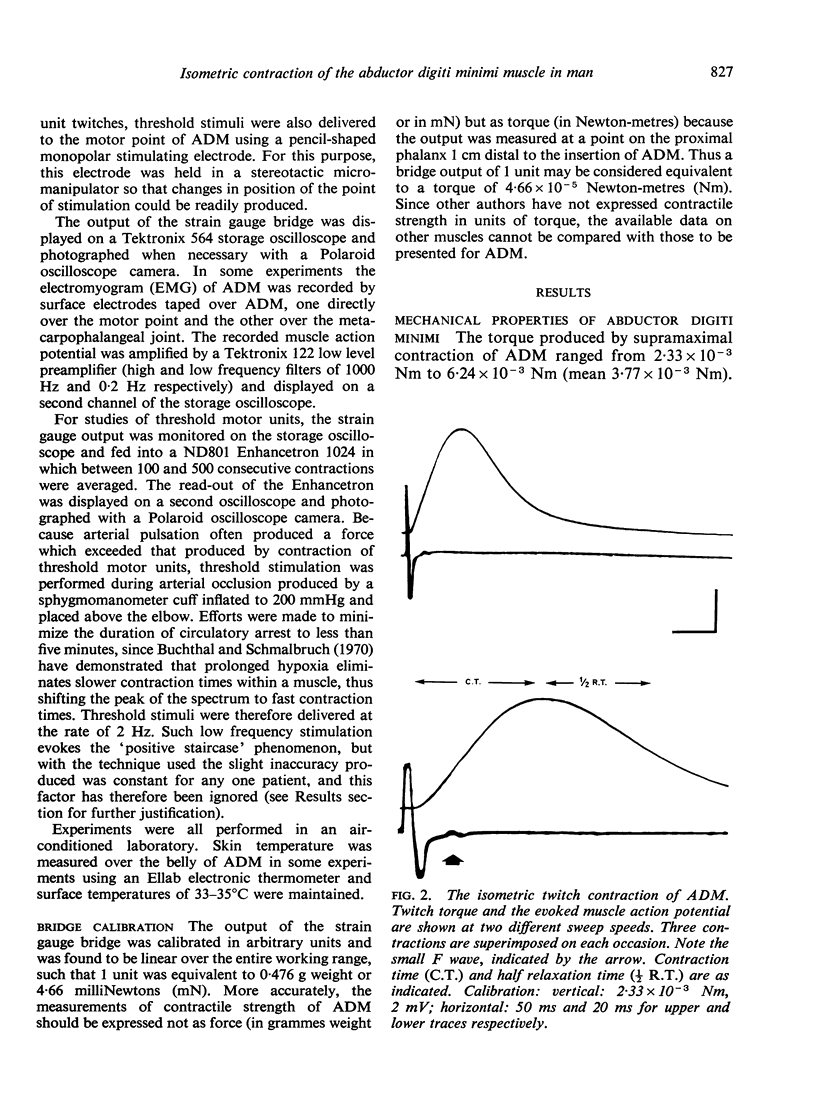
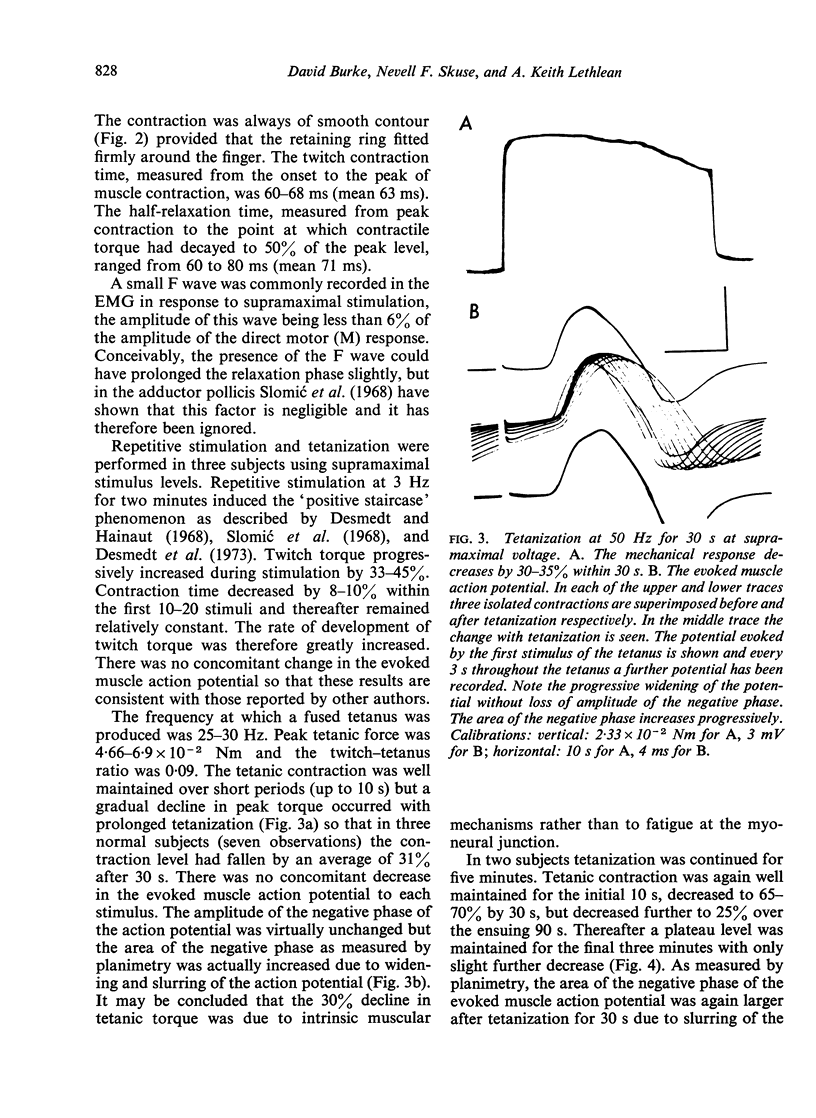
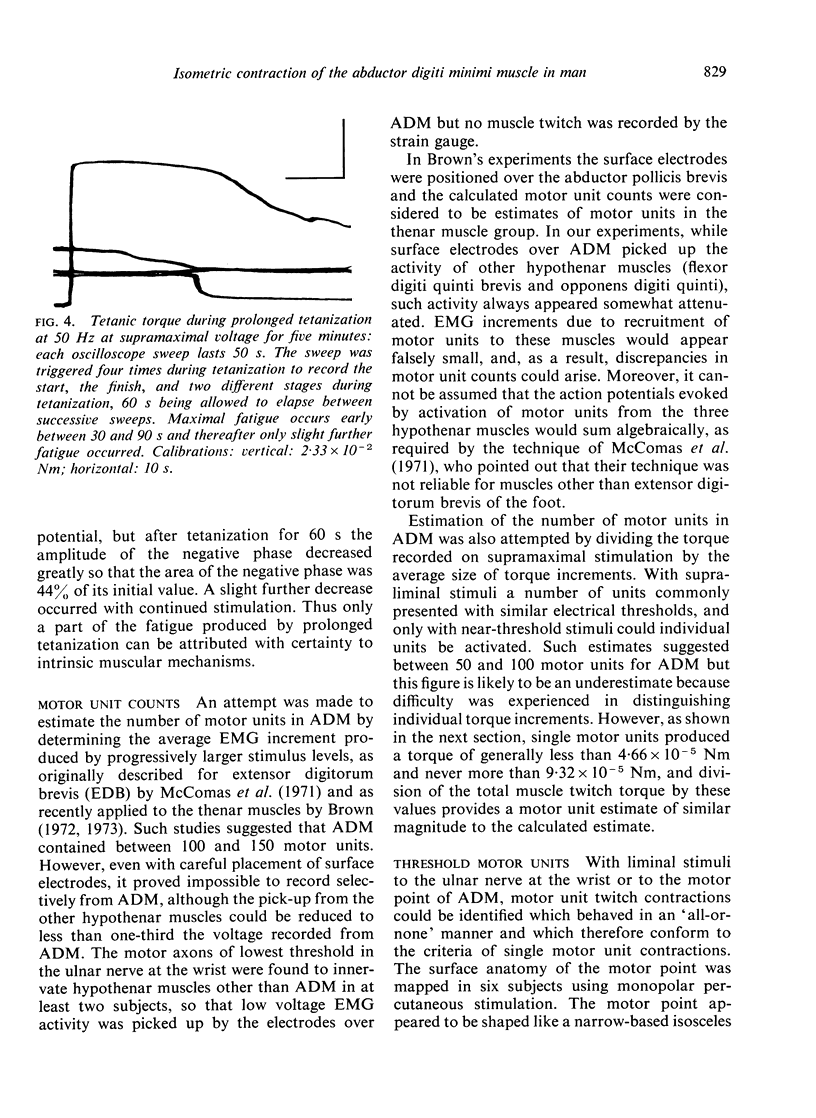
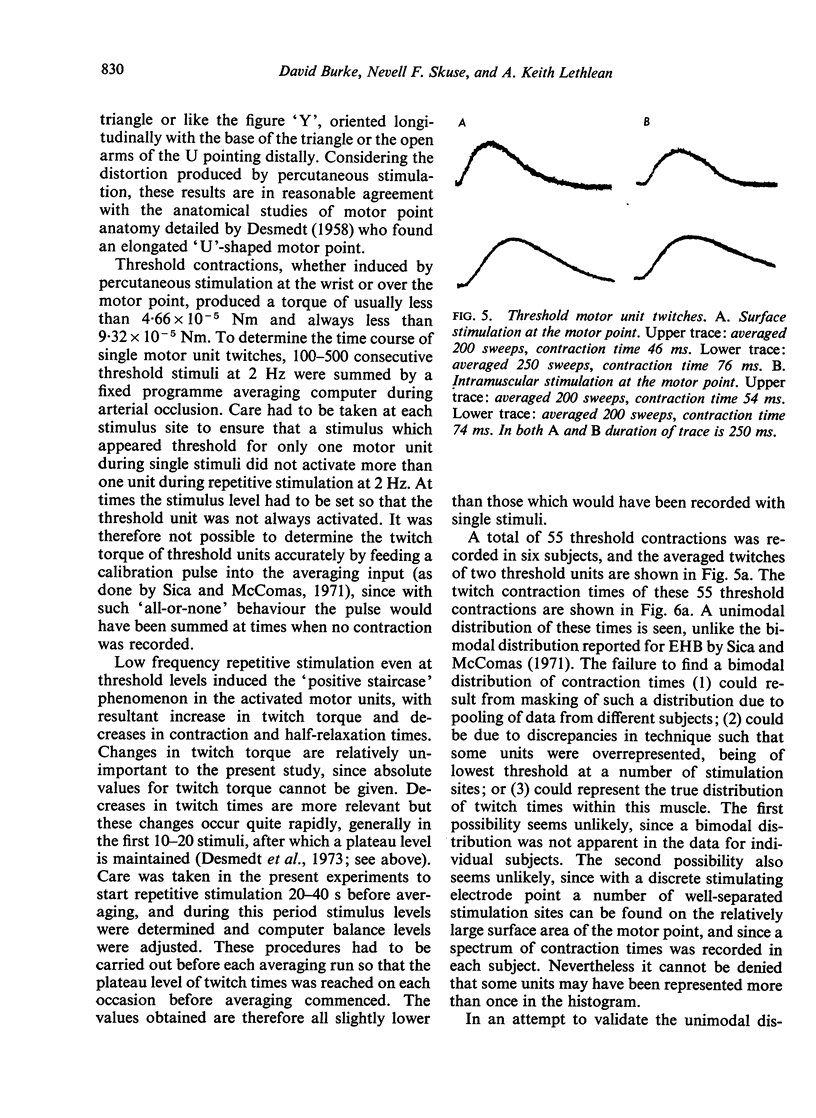
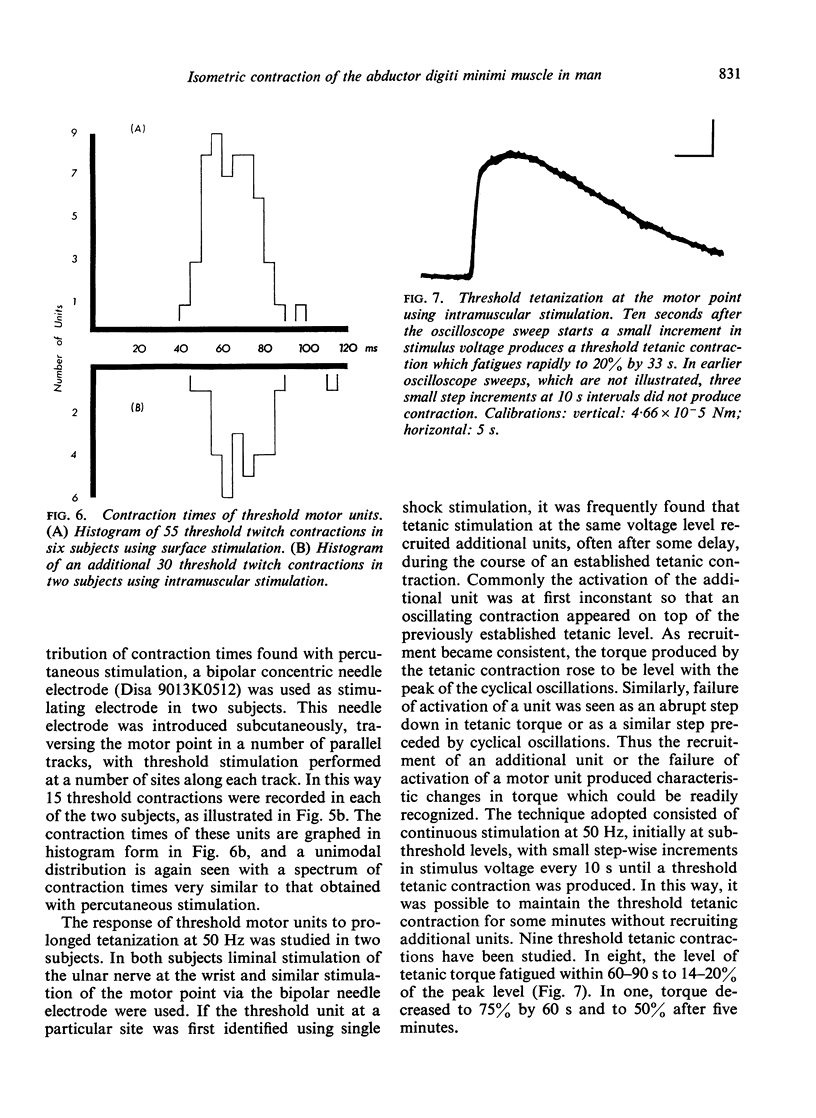
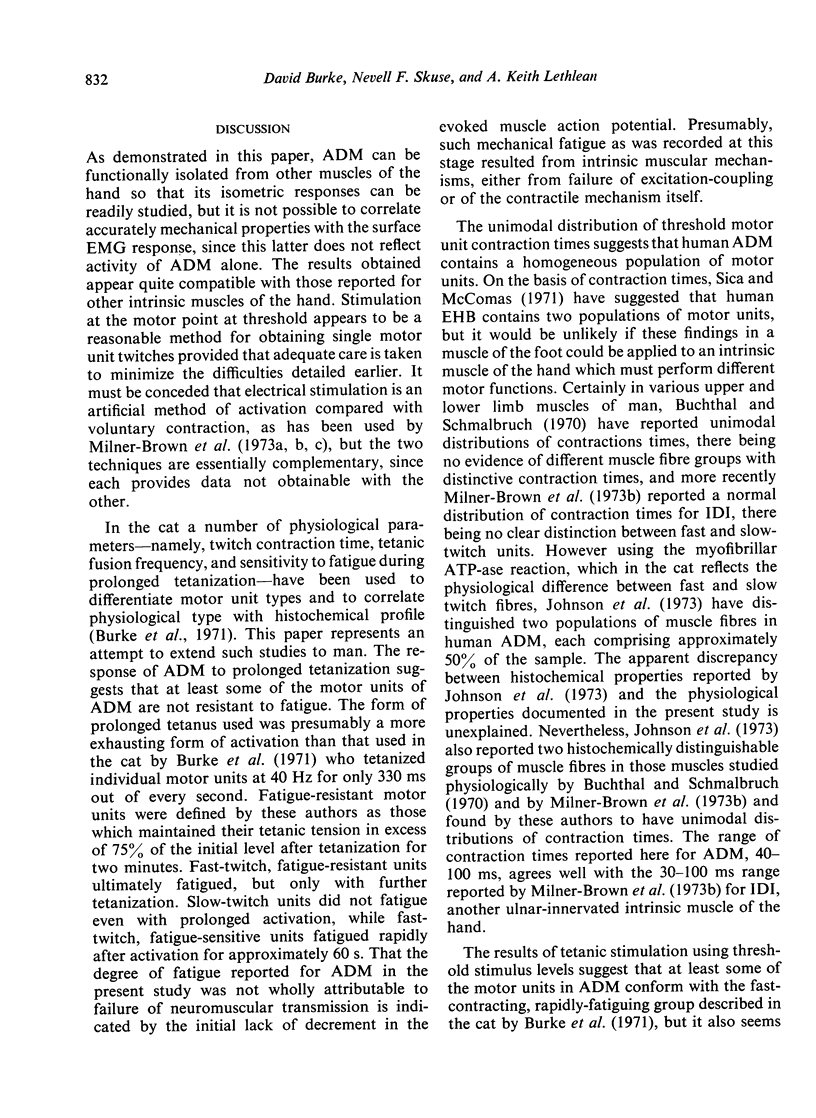
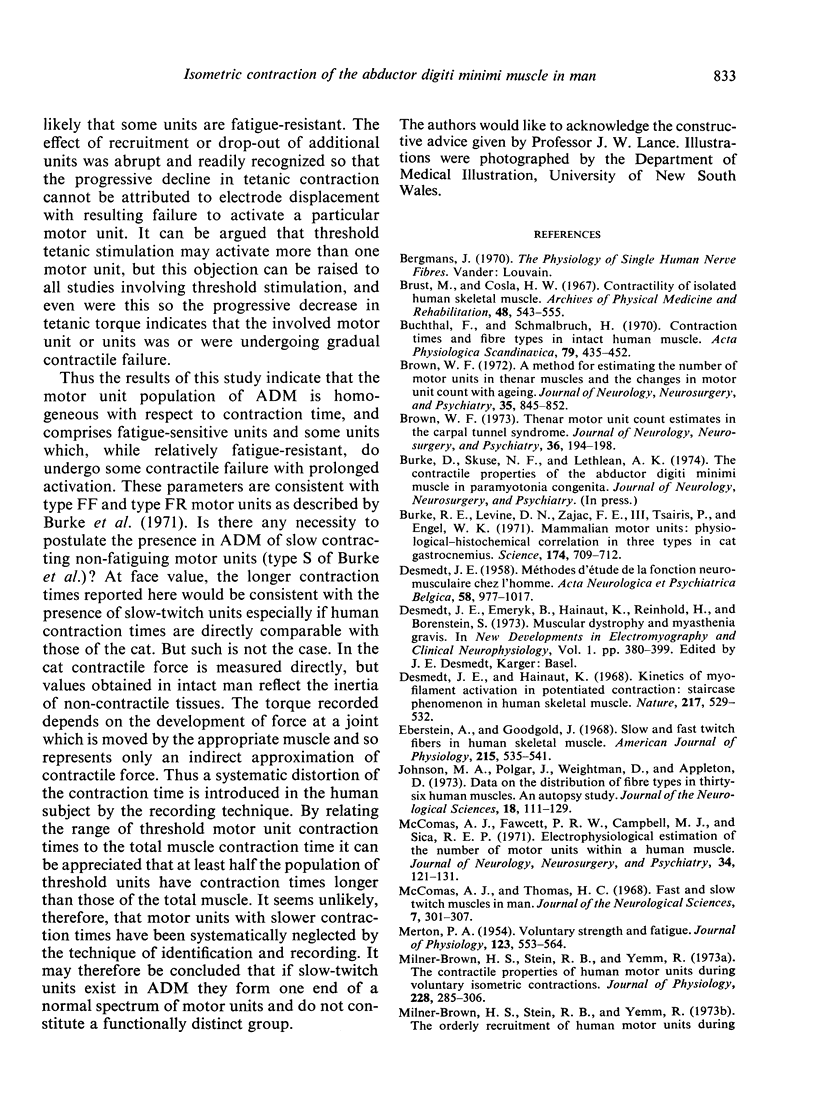
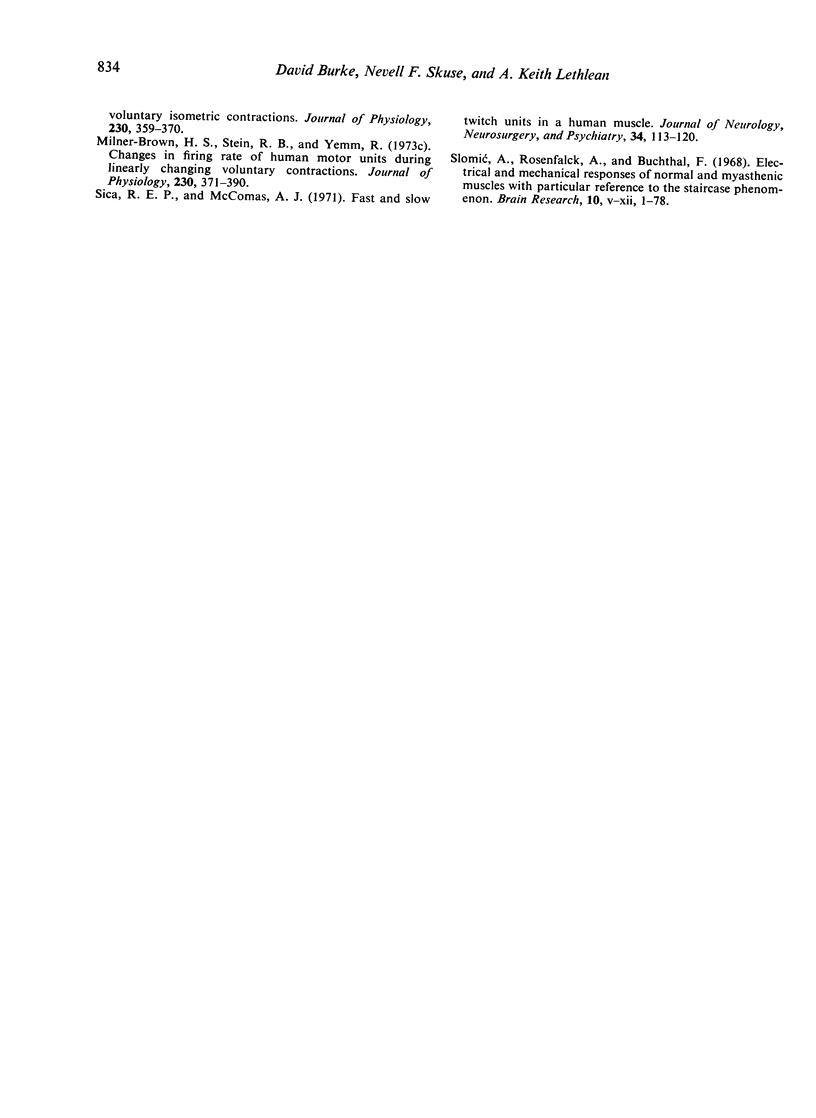
Images in this article
Selected References
These references are in PubMed. This may not be the complete list of references from this article.
- Brown W. F. A method for estimating the number of motor units in thenar muscles and the changes in motor unit count with ageing. J Neurol Neurosurg Psychiatry. 1972 Dec;35(6):845–852. doi: 10.1136/jnnp.35.6.845. [DOI] [PMC free article] [PubMed] [Google Scholar]
- Brown W. F. Thenar motor unit count estimates in the carpal tunnel syndrome. J Neurol Neurosurg Psychiatry. 1973 Apr;36(2):194–198. doi: 10.1136/jnnp.36.2.194. [DOI] [PMC free article] [PubMed] [Google Scholar]
- Brust M., Cosla H. W. Contractility of isolated human skeletal muscle. Arch Phys Med Rehabil. 1967 Oct;48(10):543–555. [PubMed] [Google Scholar]
- Buchthal F., Schmalbruch H. Contraction times and fibre types in intact human muscle. Acta Physiol Scand. 1970 Aug;79(4):435–452. doi: 10.1111/j.1748-1716.1970.tb04744.x. [DOI] [PubMed] [Google Scholar]
- Burke R. E., Levine D. N., Zajac F. E., 3rd Mammalian motor units: physiological-histochemical correlation in three types in cat gastrocnemius. Science. 1971 Nov 12;174(4010):709–712. doi: 10.1126/science.174.4010.709. [DOI] [PubMed] [Google Scholar]
- DESMEDT J. E. Méthodes d'étude de la fonction neuromusculaire chez l'homme: myogramme isométrique, électromyogramme d'excitation et topographie de l'innervation terminale. Acta Neurol Psychiatr Belg. 1958 Dec;58(12):977–1017. [PubMed] [Google Scholar]
- Desmedt J. E., Hainaut K. Kinetics of myofilament activation in potentiated contraction: staircase phenomenon in human skeletal muscle. Nature. 1968 Feb 10;217(5128):529–532. doi: 10.1038/217529a0. [DOI] [PubMed] [Google Scholar]
- Eberstein A., Goodgold J. Slow and fast twitch fibers in human skeletal muscle. Am J Physiol. 1968 Sep;215(3):535–541. doi: 10.1152/ajplegacy.1968.215.3.535. [DOI] [PubMed] [Google Scholar]
- Johnson M. A., Polgar J., Weightman D., Appleton D. Data on the distribution of fibre types in thirty-six human muscles. An autopsy study. J Neurol Sci. 1973 Jan;18(1):111–129. doi: 10.1016/0022-510x(73)90023-3. [DOI] [PubMed] [Google Scholar]
- MERTON P. A. Voluntary strength and fatigue. J Physiol. 1954 Mar 29;123(3):553–564. doi: 10.1113/jphysiol.1954.sp005070. [DOI] [PMC free article] [PubMed] [Google Scholar]
- McComas A. J., Fawcett P. R., Campbell M. J., Sica R. E. Electrophysiological estimation of the number of motor units within a human muscle. J Neurol Neurosurg Psychiatry. 1971 Apr;34(2):121–131. doi: 10.1136/jnnp.34.2.121. [DOI] [PMC free article] [PubMed] [Google Scholar]
- McComas A. J., Thomas H. C. Fast and slow twitch muscles in man. J Neurol Sci. 1968 Sep-Oct;7(2):301–307. doi: 10.1016/0022-510x(68)90150-0. [DOI] [PubMed] [Google Scholar]
- Milner-Brown H. S., Stein R. B., Yemm R. Changes in firing rate of human motor units during linearly changing voluntary contractions. J Physiol. 1973 Apr;230(2):371–390. doi: 10.1113/jphysiol.1973.sp010193. [DOI] [PMC free article] [PubMed] [Google Scholar]
- Milner-Brown H. S., Stein R. B., Yemm R. The contractile properties of human motor units during voluntary isometric contractions. J Physiol. 1973 Jan;228(2):285–306. doi: 10.1113/jphysiol.1973.sp010087. [DOI] [PMC free article] [PubMed] [Google Scholar]
- Slomić A., Rosenfalck A., Buchthal F. Electrical and mechanical responses of normal and myasthenic muscle. Brain Res. 1968 Aug 5;10(1):1–78. doi: 10.1016/0006-8993(68)90227-8. [DOI] [PubMed] [Google Scholar]



